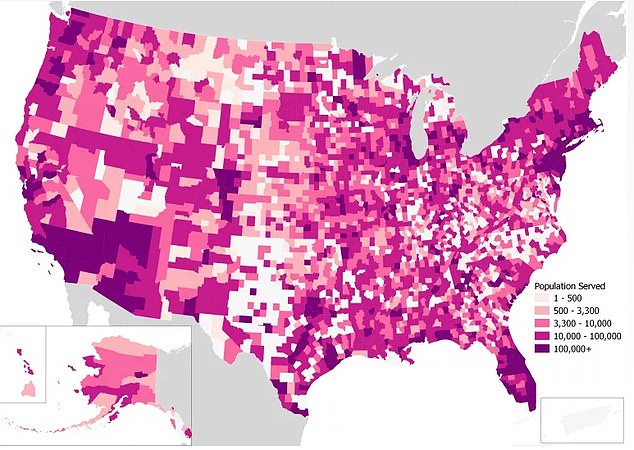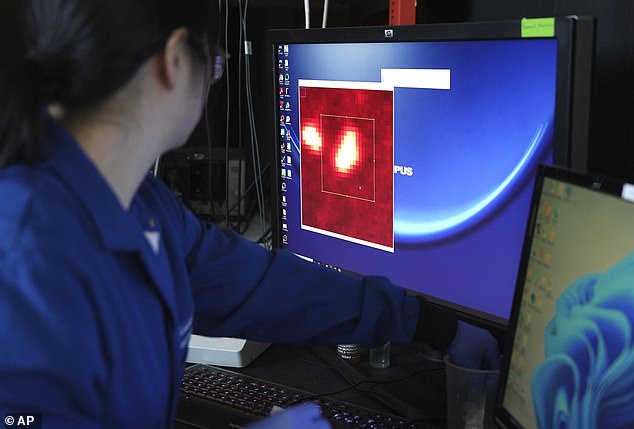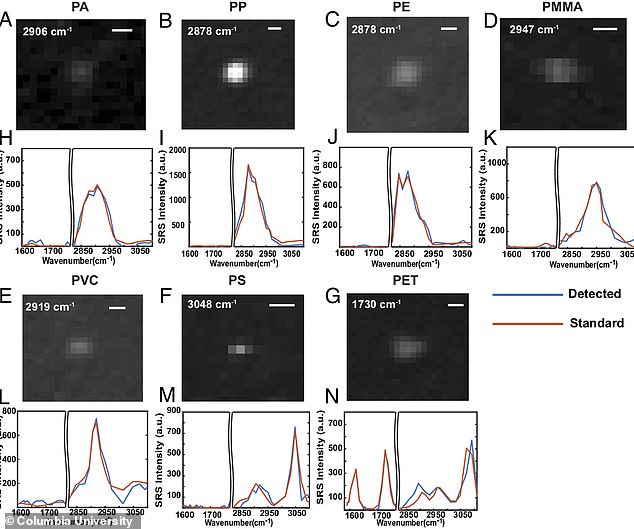So what is safer: tap or bottle? Experts give their verdict after surprising study finds 240,000 carcinogenic nanoplastics in average liter of water in stores
The number of Americans drinking bottled water has nearly doubled in recent years due to growing concerns about the chemicals found in tap water.
A series of studies showing lead contamination in water systems and clever marketing on behalf of bottled water companies have caused Americans to switch en masse to plastic bottles – with the market growing 73 percent in the past decade.
But a shocking study published this week has reignited the debate over whether drinking from the tap or a plastic bottle is safer.
Researchers at Columbia University found that the average liter bottle of water they buy at the store contains more than 240,000 nanoplastics, small molecules linked to cancer, infertility and birth defects.
DailyMail.com spoke to the lead authors of the new study, who said the entire team reduced their bottled water consumption after exposing the tiny particles.
They said they were eager to show the results to the public so they could make informed decisions about their habits.
Bottle or tap? That is the question after an explosive study warned about small plastics in bottles

The above map from pressure group the Natural Resources Defense Council (NRDC) shows the populations served by drinking water with the highest levels of lead contamination
Professor Beizhan Yan, a chemist who co-authored the Columbia study, told DailyMail.com: ‘In terms of microplastic content, tap water is a good drinking option.
“Other studies have shown that the microplastic content is much lower than that in bottled water,” Yan said.
Yan even noted that he and his team “reduced their consumption of bottled water” after the shocking study.
However, he warned against this ‘tap water may contain other contaminants, such as heavy metals and black carbon, which may be less prevalent in bottled water.’
While the Columbia team declined to reveal the names of the three popular brands of plastic water bottles they studied, Yan said they believed “all bottled water contains nanoplastics” as a result of bottle squeezing and the water filtration process.
The fear of small plastics has increased in recent years. A study published in 2023 used biological models and biomarkers to determine the toxic effects of nanoparticles when consumed.
The British researchers found that the molecules can cause cell death, cause oxidative stress, damage DNA and trigger inflammatory responses – processes linked to tumor formation.
Other studies have shown that exposure to small particles can cause serious congenital heart defects that affect heart function in chicken embryos.
But the effects on humans are based on laboratory and animal studies without direct evidence.
The Food and Drug Administration (FDA) told DailyMail.com that it was too early to panic.
A spokesperson said the agency is “not aware of any scientific evidence that would support consumer concerns about the potential levels of microplastic or nanoplastic contamination in food, including bottled water.”

Researchers at Columbia University found that the average liter bottle of water they buy at the store contains more than 240,000 nanoplastics, small molecules linked to cancer, infertility and birth defects. Pictured is a researcher looking at a nanoparticle

The team found that polyethylene terephthalate, polyamide and polystyrene were the most common particles, but also identified polystyrene, polyvinyl chloride and polymethyl methacrylate.
Professor Paul Anastas, an epidemiologist at Yale, told Dailymail.com that both tap and bottled water are fine to drink.
He said it is “impossible to know how many nanoparticles are in tap water because there is not enough data and research to draw a comparative conclusion.”
Asked whether one is safer than the other, he said: ‘Without the studies we should all be asking for, we can’t scare people when there’s no data… to draw a comparative conclusion. ‘
But at least 22 million Americans live in homes with tap water that contains detectable levels of pesticides and toxic metals — although there is still some debate about how much you should consume to experience negative health effects.
TThe U.S. Environmental Protection Agency (EPA) says these contaminants can cause brain damage and damage soft tissue and other organs at “high” exposure levels, but has taken steps to protect drinking water from contaminants.
“More than 93 percent of the population served by community water systems continuously receives drinking water that meets all health standards,” Cathy Milbourn, EPA press secretary for Office of Water, told Dailymail.com.
“EPA has established protective drinking water standards for more than 90 contaminants, including drinking water regulations issued since the 1996 amendments to the Safe Drinking Water Act that strengthen public health protections,” Milbourn said.
She added that the EPA works to protect people’s drinking water from more than 90 contaminants, including lead, and recommends people contact their local water system and health department to confirm that their drinking water is safe.
Although research shows that Brita filters and similar devices can reduce chlorine, lead and copper from drinking water, nanoplastics are so small that they can bypass them.
Nanoplastics are particles smaller than 1 micrometer – about 70 times smaller than human hair.
“This size difference has a significant impact on their interaction with the human body and the environment,” Yan said.
‘Nanoplastics, due to their smaller size, are more likely to penetrate primary biological membranes (e.g. the lining of the gastrointestinal tract) and secondary barriers, such as the placenta and the blood-brain barrier, potentially leading to more serious health consequences compared to microplastics . ‘
